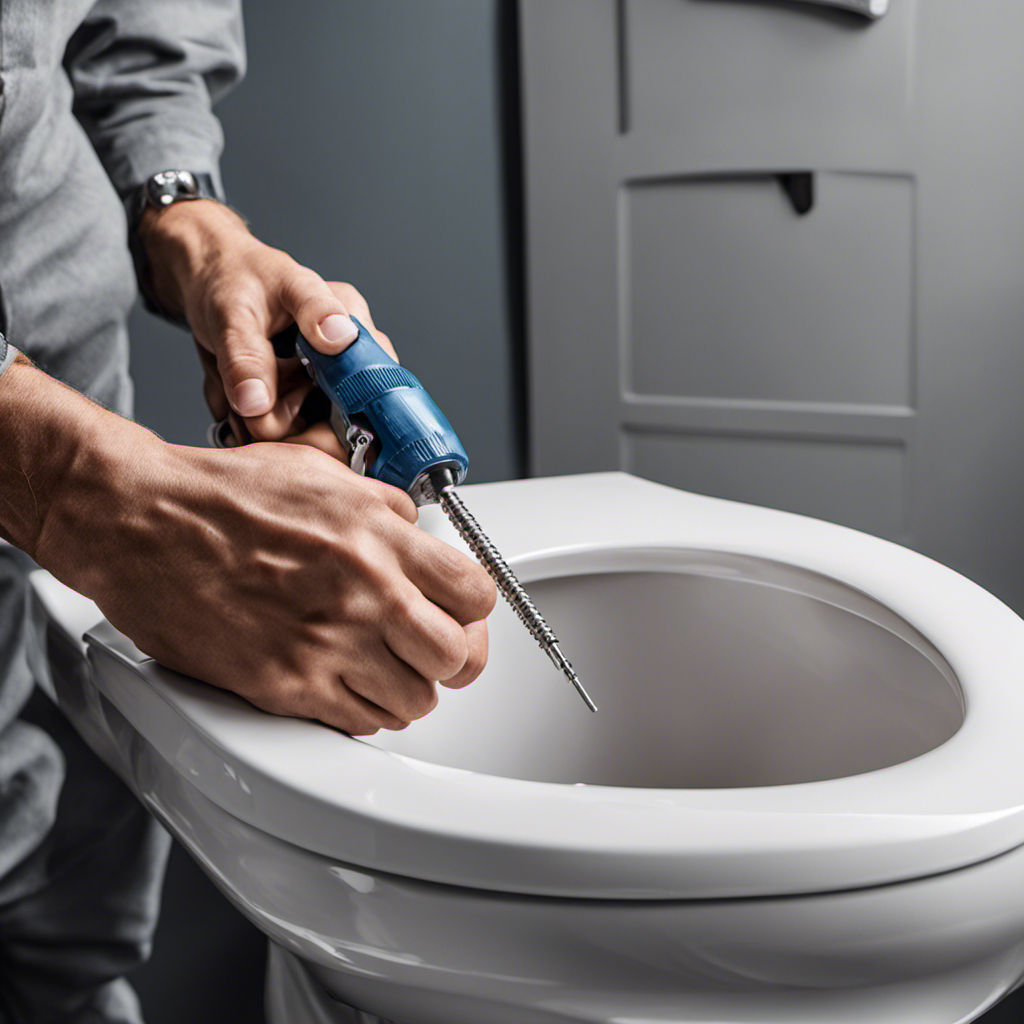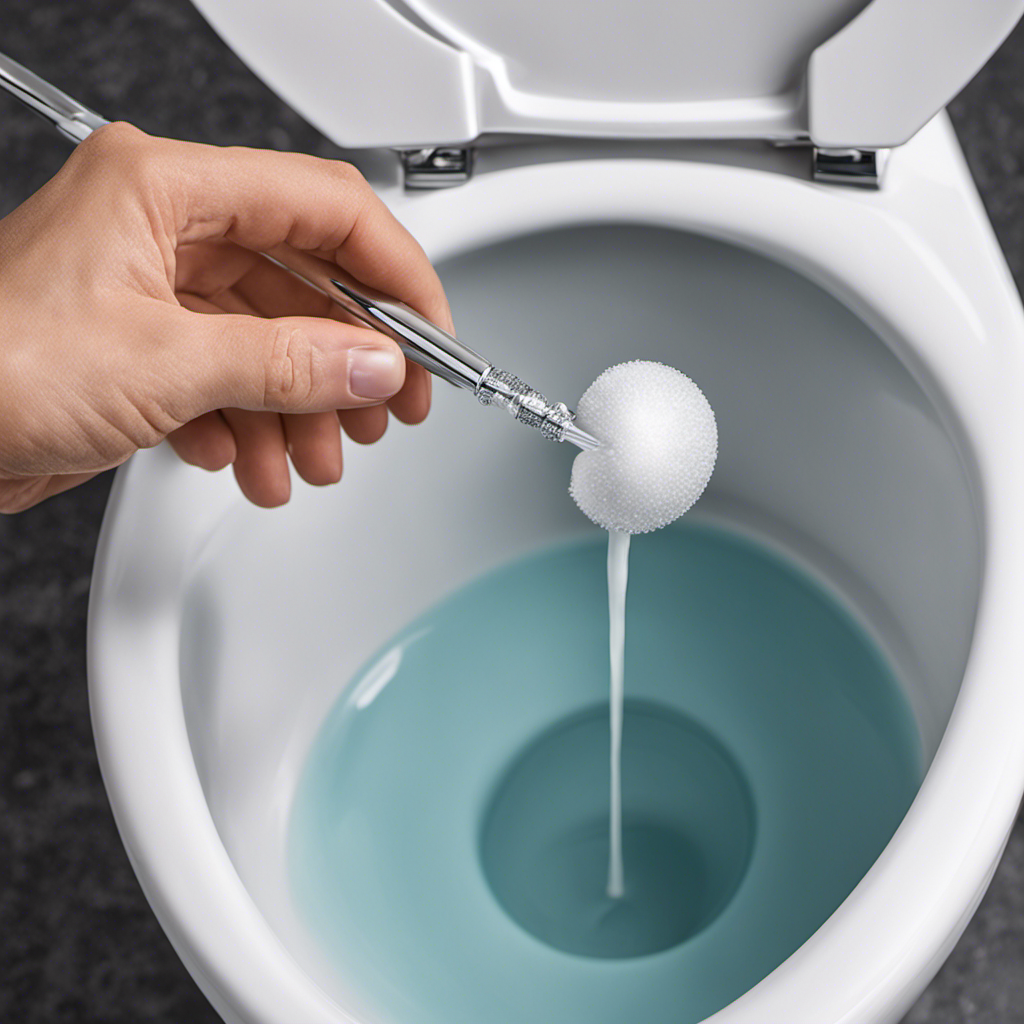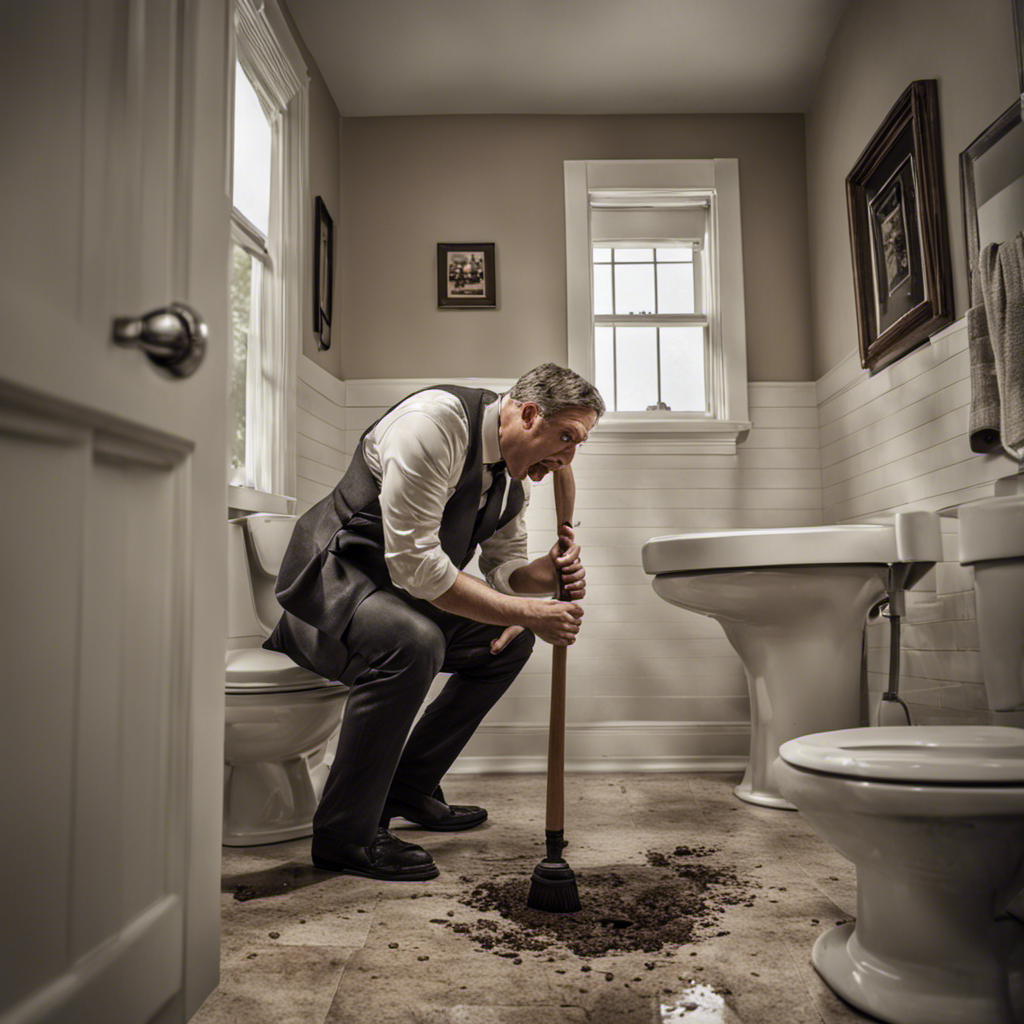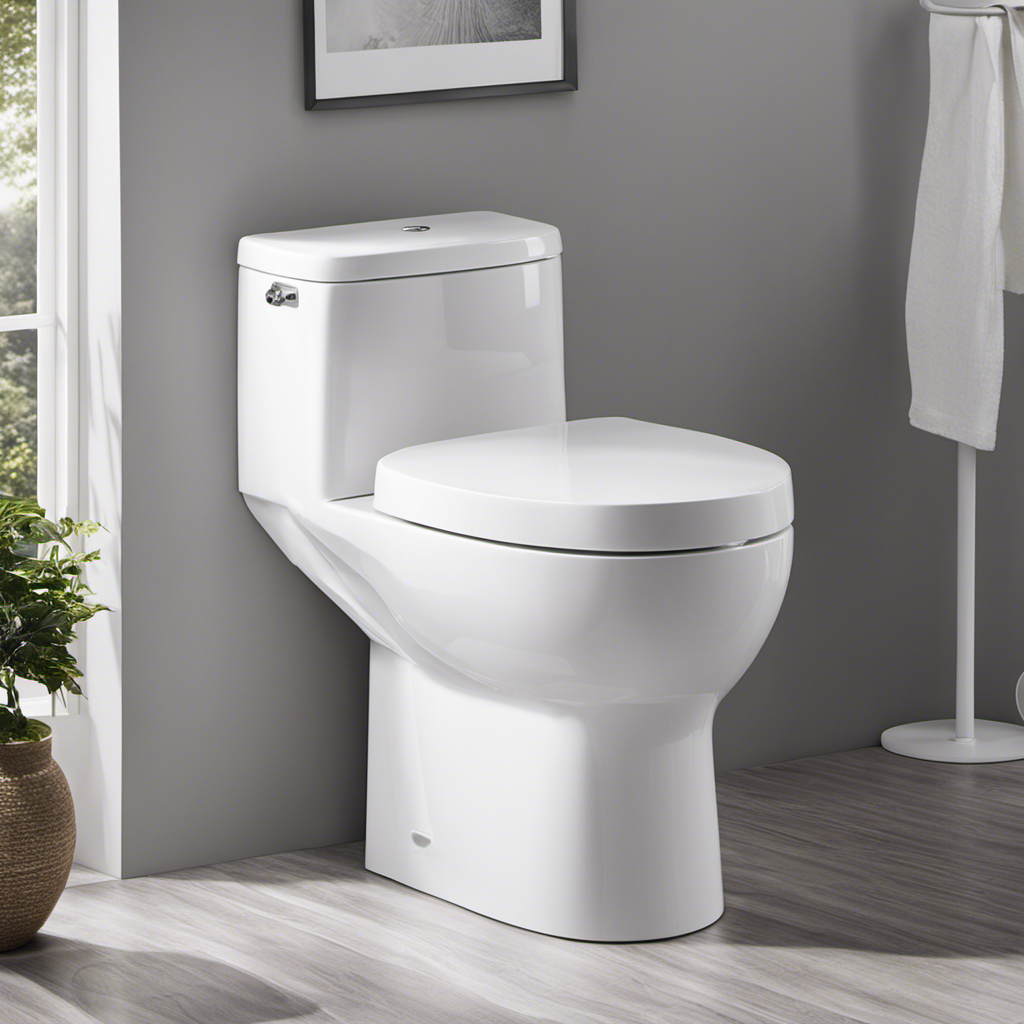As I sit down on my wobbly toilet seat for the umpteenth time, I realize it’s time to take action.
In this article, I’ll show you how to fix that annoying wobble and regain the stability you deserve.
By following a few simple steps and using some basic tools, you’ll have your toilet seat as sturdy as ever.
So, let’s roll up our sleeves and get to work, because a wobbly toilet seat is no match for our DIY skills.
Key Takeaways
- Loose bolts or screws and worn-out hinges are common causes of a wobbly toilet seat.
- A cracked or damaged seat can also contribute to instability.
- It is important to measure the distance between the mounting holes to ensure the correct size of the new seat.
- Shims can be used to provide additional stability if tightening the bolts is not sufficient.
Identifying the Issue
First, you’ll need to figure out why your toilet seat is wobbly. There are several common causes of a wobbly toilet seat that you should be aware of.
One possible reason is loose bolts or screws. Over time, these can become loose and cause the seat to wobble.
Another cause could be worn-out hinges. If the hinges are worn or damaged, they may not be able to hold the seat securely in place.
Additionally, a cracked or damaged seat can also lead to instability. Signs that indicate a need for toilet seat repair include visible movement or rocking when sitting on the seat, the seat shifting to one side when weight is applied, or a noticeable gap between the seat and the toilet bowl.
Identifying the issue correctly is the first step towards fixing your wobbly toilet seat.
Gathering the Necessary Tools
Before you start, make sure you have all the necessary tools to get the job done. Proper toilet seat installation is important for comfort and stability.
When choosing the right toilet seat size, measure the distance between the mounting holes on your toilet bowl. This will determine the size of the seat you need.
To properly install the seat, you will need a screwdriver, adjustable wrench, and possibly a hacksaw if the seat needs to be trimmed.
Start by removing the old seat and cleaning the area. Then, place the new seat on the bowl, aligning the mounting holes. Insert the bolts through the holes and tighten the nuts underneath.
Make sure the seat is secure and does not wobble. Finally, test the seat for stability before using.
Tightening the Toilet Seat Bolts
Once you have aligned the mounting holes and inserted the bolts, tighten the nuts underneath to ensure a secure toilet seat.
Here are some steps to help you properly tighten the toilet seat bolts:
- Use a wrench or a pair of pliers to grip the nut underneath the toilet bowl.
- Turn the wrench or pliers clockwise to tighten the nut.
- Make sure not to overtighten the nut as it may cause damage to the toilet bowl or the seat.
- Test the toilet seat by sitting on it and checking for any wobbling or movement. If it still feels loose, repeat the tightening process.
By following these steps, you can fix a wobbly toilet seat and ensure a comfortable and stable bathroom experience.
If the wobbling persists even after tightening, you may consider seat replacement or adjusting the hinge tension for a more secure fit.
Using Shims for Additional Stability
Using shims can provide extra stability to your toilet seat. If you’ve tried tightening the bolts and the seat still wobbles, shims are a great alternative solution.
Common mistakes people make when using shims include using the wrong size or material. Shims are typically made of plastic or rubber and come in various thicknesses.
To use shims, first, remove the toilet seat and clean the area. Then, place the shims on the toilet bowl, making sure they are evenly distributed. Reinstall the seat and test for stability. If needed, adjust the shims until the seat is secure. Remember to trim any excess shim material.
Using shims is a simple and effective way to fix a wobbly toilet seat. Now, let’s move on to regular maintenance and prevention tips.
Regular Maintenance and Prevention Tips
Regular maintenance and prevention tips include regularly cleaning and inspecting your toilet seat to ensure it remains stable. Here are four important steps to take:
-
Clean the seat: Use a mild detergent and warm water to clean the seat and hinges. Remove any debris or residue that may cause the seat to become loose or unstable.
-
Inspect the hinges: Check the hinges for any signs of wear or damage. If the hinges are loose or worn out, they may need to be replaced. This can be done by purchasing a new set of hinges and following the manufacturer’s instructions for installation.
-
Tighten the screws: If the hinges are in good condition, but the seat is still wobbly, try tightening the screws. Use a screwdriver to tighten the screws gently, being careful not to overtighten and damage the seat.
-
Consider a replacement: If the seat continues to be unstable despite your efforts, it may be time to consider a toilet seat replacement. Look for a seat that is compatible with your toilet and follow the installation instructions carefully.
Frequently Asked Questions
Can I Fix a Wobbly Toilet Seat Without Using Any Tools?
No tools needed. Here are 5 simple steps to fix a wobbly toilet seat: tighten bolts, check base, use shims, try alternative methods, prevent long term damage. It’s easy and won’t take much time.
How Do I Know if the Wobbling Is Caused by Loose Toilet Seat Bolts or a Damaged Toilet Base?
Toilet seat stability can be affected by loose bolts or a damaged base. By inspecting the bolts and checking for any cracks or damage to the base, I can determine the cause of the wobbling.
Are There Any Alternative Methods to Using Shims for Stabilizing a Wobbly Toilet Seat?
I discovered some alternative solutions to stabilize a wobbly toilet seat without using shims. By tightening the bolts, using rubber washers, or installing a toilet seat stabilizer, you can fix the wobble.
What Should I Do if I Tighten the Toilet Seat Bolts, but the Seat Still Wobbles?
If I tighten the toilet seat bolts but the seat still wobbles, I should consider replacing the toilet seat. Sometimes the bolts can become worn or damaged, and replacing the seat can provide a more stable and secure solution.
Can a Wobbly Toilet Seat Cause Any Long-Term Damage to the Toilet or Plumbing System?
A wobbly toilet seat may pose potential long-term effects on the toilet and plumbing system. To prevent damage, ensure the seat is securely tightened. Regularly check and address any wobbling to maintain the integrity of the toilet and plumbing.
Conclusion
So there you have it, folks! We’ve come to the end of our journey on how to fix a wobbly toilet seat.
Hopefully, you found these tips helpful in addressing this pesky issue.
Remember, it’s important to identify the problem, gather the necessary tools, and tighten those bolts.
And if all else fails, don’t forget about using shims for that extra stability.
With regular maintenance and a proactive approach, you can keep your toilet seat steady and avoid any unwelcome surprises.
Happy fixing!










